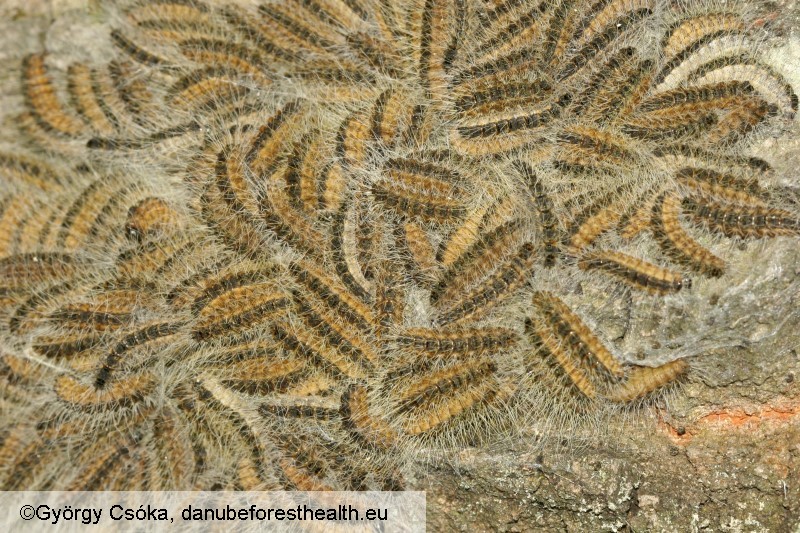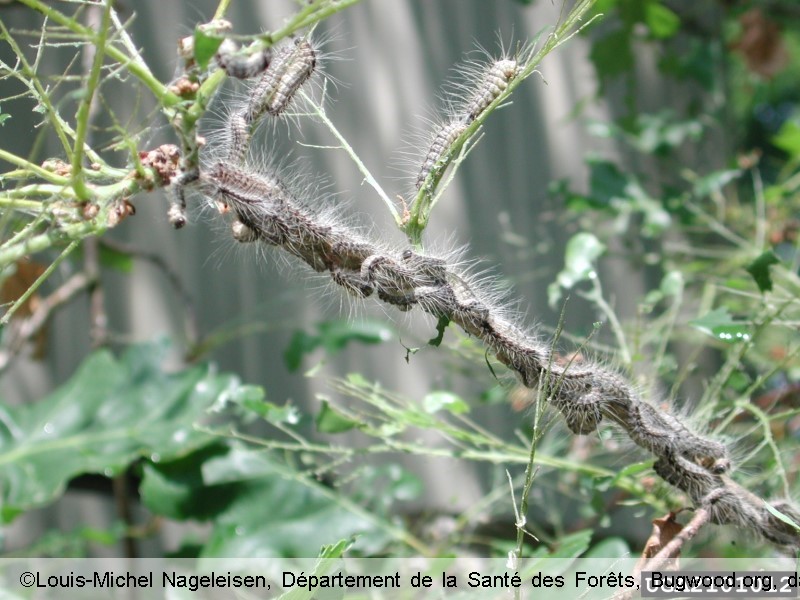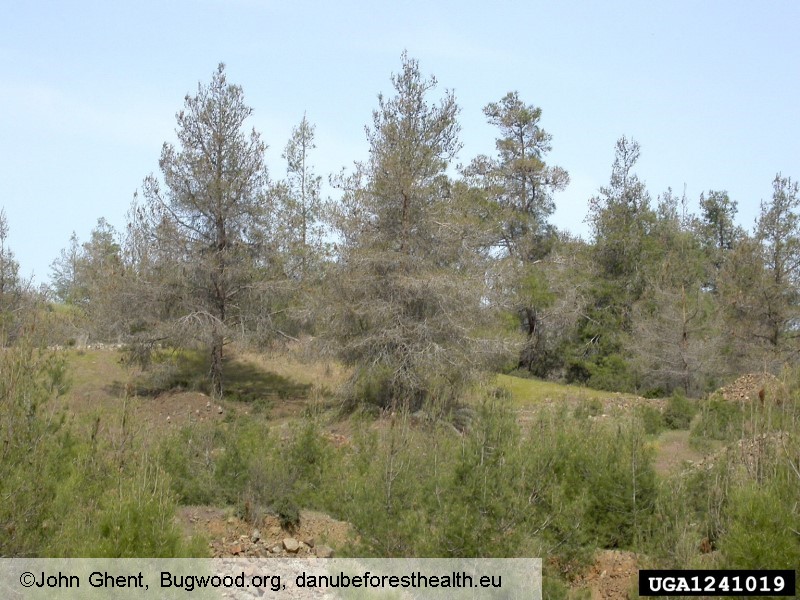Animalia
Oak processionary moth
Thaumetopoea processionea
Andreja Kavčič
|
|

Fig. 1. An adult oak processionary moth, Thaumetopoea processionea

Fig. 2. First instar caterpillars aggregated on the egg mass

Fig. 3. A characteristic larval nest

Fig. 4. Thaumetopoea processionea late-instar caterpillars

Fig. 5. Defoliation caused by the oak processionary moth

Fig. 6. Defoliation caused by the brown-tail moth (Euproctis chrysorrhoea) larvae

Fig. 7. Defoliation in a pine stand caused by the pine processionary moth, T. pityocampa
DETECTION PERIOD:
April to September. Egg masses can be seen from October to March.
DESCRIPTION:
Adults are brownish moths with the wingspan of 25–35 mm. The oak processionary moth has one generation per year. Adults fly in August and September. Females lay eggs on smooth bark in the canopy and cover them with a dark grey secretion. Eggs overwinter. Larvae emerge between April and May. They are dark, reddish-brown to greyish-green, with a black head and a black line along the dorsal side of the body. Numerous long, whitish hairs cover their body. Larvae live gregariously. They excrete silky threads to make so called nests, mainly on tree trunks, where they rest during the day. Larvae leave nests in the evening to feed on oak leaves during the night. They return to the nest early in the morning. Caterpillars move in typical nose-to-tail processions, hence their name. The procession can be several meters long. When fully grown, larvae are 20–25 mm long. They pupate in dark grey cocoons in July, in nests on the tree trunk or at the tree base.
HABITAT:
The oak processionary moth can be found on oaks (Quercus spp.) in natural habitats, nurseries, plantations and urban areas. It is a thermophilic species, widespread in southern and central Europe. Due to the international trade of host plants and global warming, its distribution range is expanding northwards. Occasionally, it can be found as far north as Sweden.
STATUS:
Thaumetopoea processionea is native to central and southern Europe, which includes also the ReFOCUS area.
IMPACT:
Damage is caused by larvae that feed on leaves and cause first skeletonization and later defoliation. Outbreaks are common in warmer climates and can lead to extensive forest defoliation. Continuous and long-lasting defoliation can cause serious damage to forest stands, rendering trees vulnerable to negative abiotic and biotic influences, to causing direct tree mortality. The oak processionary moth larvae are known for their urticating hairs that cause inflammations and pose threat to human and animal health. In the most extreme cases, they cause anaphylactic reactions. The hairs readily detach and travel by wind. They can persist in the environment and pose a health hazard for several years.
SIMILAR SPECIES:
The oak processionary moth can generally be well distinguished from other moth species. It is very similar to the pine processionary moth, T. pityocampa, but the latter has a different host (pines) and the larvae make nests in the canopy. The brown-tail moth, Euproctis chrysorrhoea, larvae build nests on different broadleaves, including oaks, and have urticating hairs, but they morphologically clearly differ from the oak processionary moth.
|